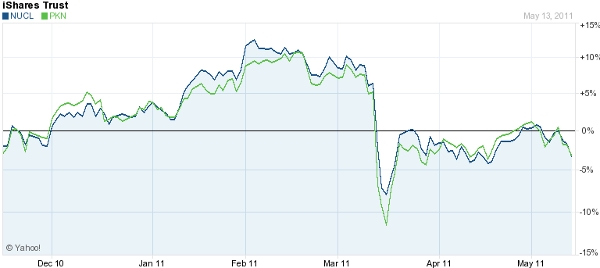Two of your editors are in the field this week.
Christian is in Kenya finding out which companies will get access to the oil in the East African Rift — the same geologic structure that gave the Arabian Peninsula its vast reserves.
I’m a bit closer to home, in an industrial park about 30 minutes north of Beantown, getting a firsthand look at how rare earth metals are turned into useful products.
Both trips will be parlayed into investment research and stock recommendations for you.
What’s Brewin’ in Boston?
Rare earth metals have soared to prominence in the last year.
Used in nearly every modern day electronic — batteries, phones, computers, TVs, fiber optics — demand for these metals has never been higher, and is only expected to grow.
I offered a nice summary of the uses of rare earths in these pages a few months ago.
You see the chemical, nuclear, and physical properties of these metals make them ideal for numerous high-tech applications. Things you’ve forgotten about since high school like density, melting point, thermal conductivity, and others make this group of elements perfect for use in the data transmission, touch screen, high definition, and imaging devices that power modern life…
And the more research done on these metals, the more uses we’re finding: missile guidance systems, super strong and light alloys, magnets, wave tubes, neutron reflectors, and other devices that keep you safe and make your life easier without you even knowing it.
That’s exactly why any company dealing with rare earths has been making investors smile for the past year.
Even the mainstream IPO, Molycorp (NYSE: MCP), and Rare Earth Metals ETF (NYSE: REMX) have tacked on hundreds of percent:

And that’s without mentioning the thousands of percent smaller mining outfits paid out during the same time…
All this activity and interest is why I’m taking a two-day tour of a just-opened beryllium facility in Wilmington, Massachusetts.
Beryllium alloys weigh half as much as titanium, but are twice as stiff and have similar performance characteristics.
The company I’m visiting has come up with a way to add beryllium to other metals, making a super strong alloy perfect for aerospace and defense applications.
The Air Force wants to see how these alloys will perform in drones and fighter jets. And I wanted to find out, too.
Look for videos from the trip upon my return, as well as more information on the company.
Buffett & Bill
One of the other uses for rare earth metals is the energy industry.
Aside from their crucial role in batteries, rare earths are also being tested for use as nuclear fuel — or at least as nuclear fuel additives.
Early research has already shown adding elements like beryllium to uranium can make the reaction process safer and more efficient, saving both dollars and worry. That technology will prove increasingly valuable in the coming years as the use of nuclear increases.
A recent research report from Raymond James says demand for uranium is likely to outstrip supply by next year, and that “starting this year and carrying through the next six years, reactors currently under construction are finally expected to start coming on stream in large numbers.”
Raymond James cites Hathor Exploration (TSXV: HAT) and Paladin Energy (TSXV: PDN) as top uranium picks.
But I and two of the world’s richest men think the big money will be made from a new generation of nuclear solutions, of which there have been none in decades…
Giving the keynote at Wired Magazine’s ‘Disruptive by Design’ conference earlier this month, Bill Gates told the audience the Japanese disaster has merely shaken public confidence in nuclear power.
(Thanks to Wired for being consistently ahead of the curve. That’s also where we first learned of the technology that could grow new body parts from a single cell.)
“The good news about nuclear is that there has hardly been any innovation,” he said. “The room to do things differently is quite dramatic.”
He’s pouring millions into TerraPower, a company that uses less-toxic uranium as fuel, which I’ve already told you about.
Similarly, Warren Buffett came out in support of nuclear energy at Berkshire Hathaway’s general meeting a few weeks ago. He acknowledged that Japan may be a setback, but that it ultimately didn’t change his view that “nuclear power is important for the world”.
The company I’m visiting right now also has a deal with three of the world’s top uranium fuel suppliers to test the addition of rare earth metals.
I’ll be releasing all the details in the coming weeks.
In the meantime, take some time to explore a long-term position in the nuclear industry.
The events of early March are still suppressing the true market value of the industry, and grabbing shares of an ETF now will allow you to profit once nuclear resumes its growth trajectory.

Call it like you see it,
![]()
Nick Hodge
Editor, Energy and Capital

